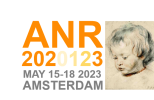Venue
The Beurs van Berlage breathes history and character. It was already a bustling trading place in 1903. Today it’s a one in a million conference location in the warm heart of Amsterdam, with high quality and service, an impressive atmosphere and excellent facilities. A fantastic location that you’ll never forget!
Visiting address
Beurs van Berlage (Main entrance and mailing address)
Damrak 243
1012 ZJ Amsterdam
In the heart of Amsterdam
The Beurs van Berlage is located in Amsterdam city centre, surrounded by good parking facilities and many hotels. Getting here, home or to your Hotel is so easy with the excellent connections we have here in the Netherlands. We have non-stop flights from Schiphol Airport and a Metro, Tram en Railway station within a 5 minutes walking distance.
Amsterdam the place where everyone wants to be
What makes Amsterdam so special? It’s open minded, unique and a bit stubborn. Full of initiatives, like the many innovative startups that are established here. Moreover, the economic climate in Amsterdam is stable and the capital ranks high in the global safety index. The open, entrepreneurial and dynamic vibe of Amsterdam comes together in the core of the city: the Beurs van Berlage. The place to be when it comes to conferences and events.
Grote zaal (Villa Joep Plaza)
Grote zaal
The Grote Zaal (“great hall”) originally housed the Commodity Exchange, one of the four exchanges that were housed in the Beurs van Berlage. The Commodity Exchange was the trading place where goods were traded such as pepper, coffee, cocoa, sugar and oil. The Commodity Exchange departed and was replaced by the Insurance Exchange where insurance policies were sold until 1982. Today, the Grote Zaal serves as a unique event venue for conferences and events. During the ANR2020 meeting the Grote zaal will called The Villa Joep Plaza and will function as central forum for the meeting.
Meeting rooms
Effectenbeurszaal
In 1903, the Stock Market took the Effectenbeurszaal (Stock market hall) in use. From that moment on, stocks and bonds were traded here daily. Until 1912, when the Exchange received its own building next to the Beurs van Berlage at Beursplein 5. After the departure of the Stock Exchange, the Effectenbeurszaal served as currency exchange and transfer office in Amsterdam. In 1985 the Dutch Philharmonic Orchestra (NedPhO) started using both the Graanbeurszaal and the Effectenbeurszaal. The Effectenbeurszaal was converted into a concert hall and acoustically improved to an excellent concert experience. In 2012 NedPhO moved to Majella Church in Amsterdam East. The stage was removed, but the hall retained its improved acoustics.
Graanbeurszaal
Grain Traders traded large quantities of grain that was imported from far away. To be able to sell this in the Netherlands, they needed a fair where they could negotiate: the Graanbeurszaal (Corn Exchange Hall). After World War II, with the arrival of telex and telephones, the grain traders no longer needed the Exchange for their transactions. The Food Fair with its canned vegetables was therefore added to the Graanbeurszaal until 1960. The Graanbeurszaal housed a permanent exhibition for industrial design until 1976, after which the first options
exchange in the world was established here. From 1987 to 2014, the Graanbeurszaal was used for rehearsals of the Chamber Orchestra of the Dutch Philharmonic Orchestra.
Keurzaal
The Keurzaal (Inspection Room) is located on the north side of the Beurs van Berlage and overlooks the Old Port and Amsterdam Central Station. Original Keurzaal was an open space that could serve as a reception area for the traders from the corn exchange. Also, this open terrace was used by the grain traders to inspect grain samples in daylight.
After the grain was inspected in this open space, samples were transferred into the adjacent Graanbeurszaal. There, traders could see the various grains, compare them and be convinced by vendors. Then they went to the Veilingzaal (Auction Room) where one could participate in the auction to buy lots of cereals.
In later years, the Keurzaal was covered and the open windows were fitted with glass to maintain the view to Central Station.






